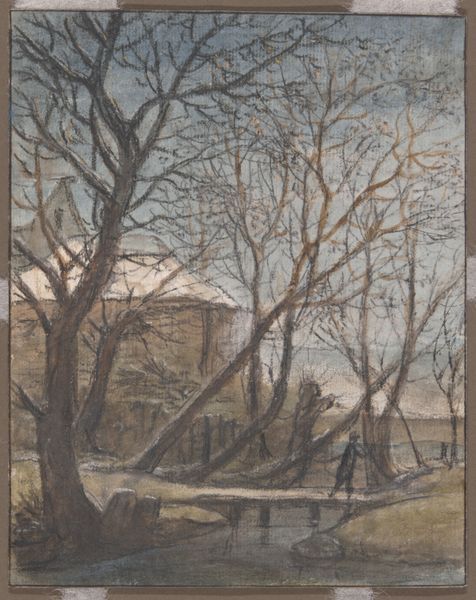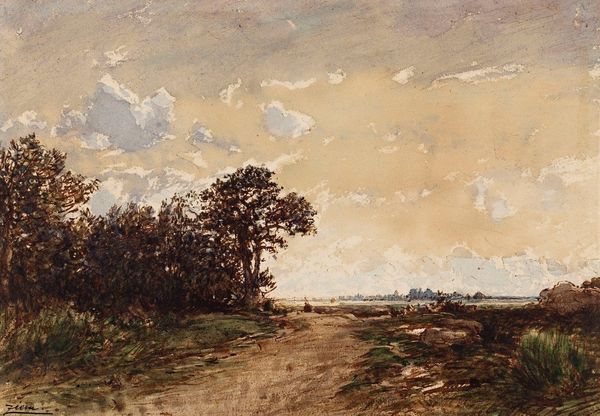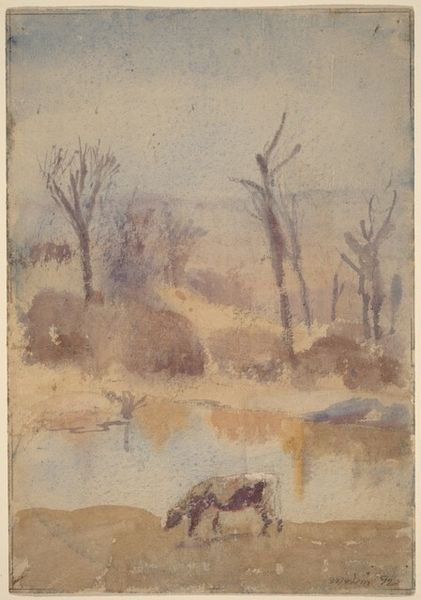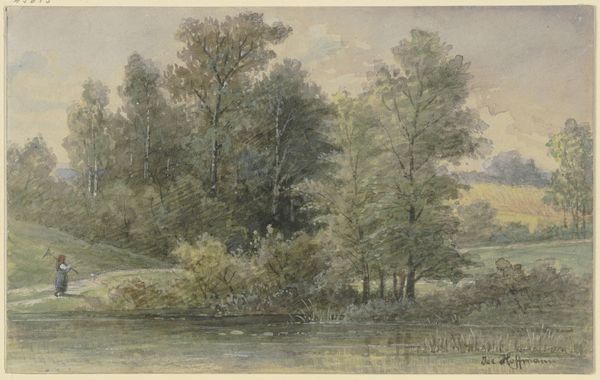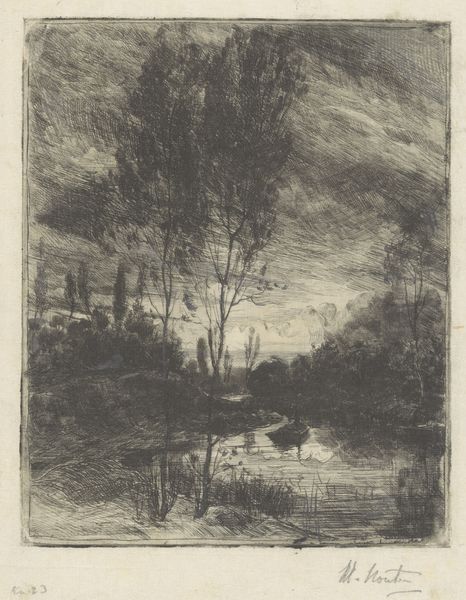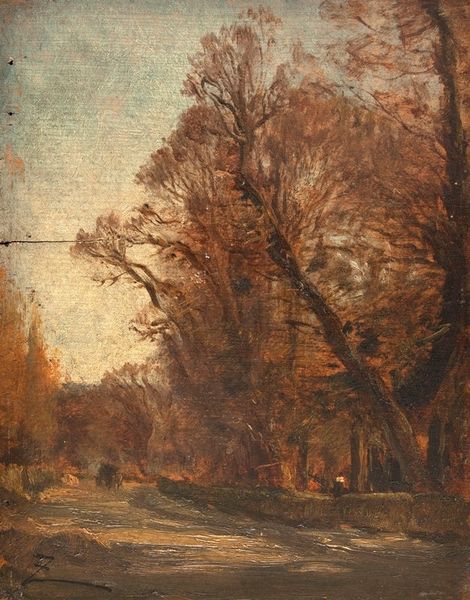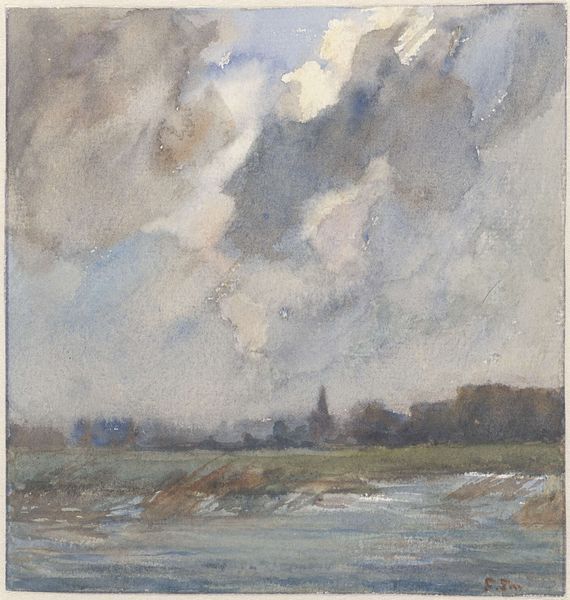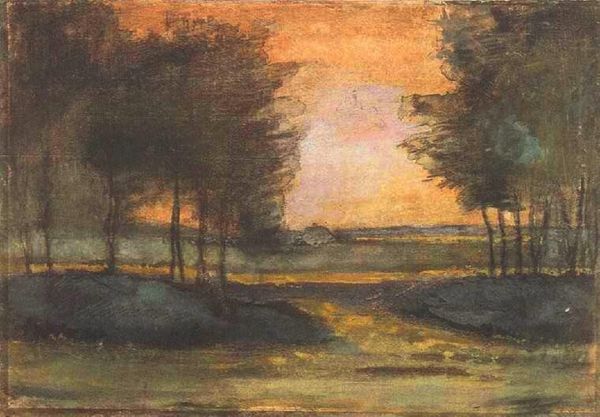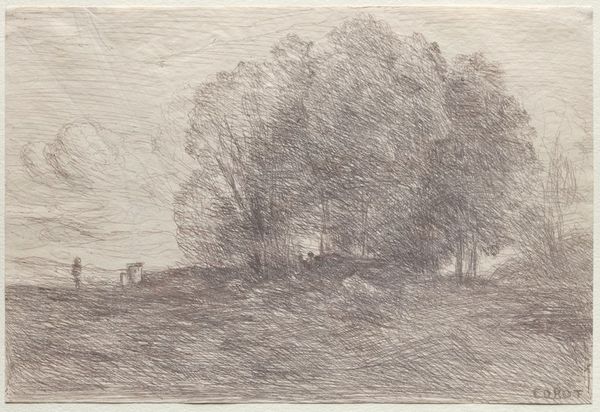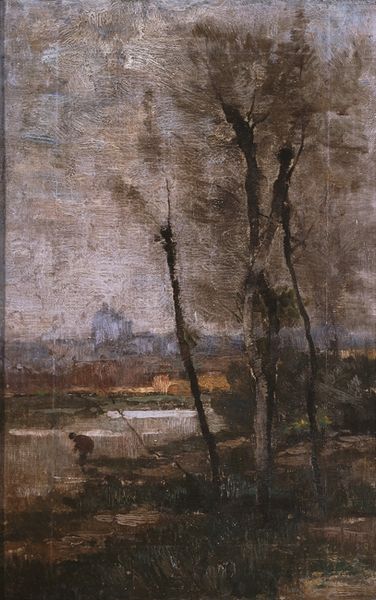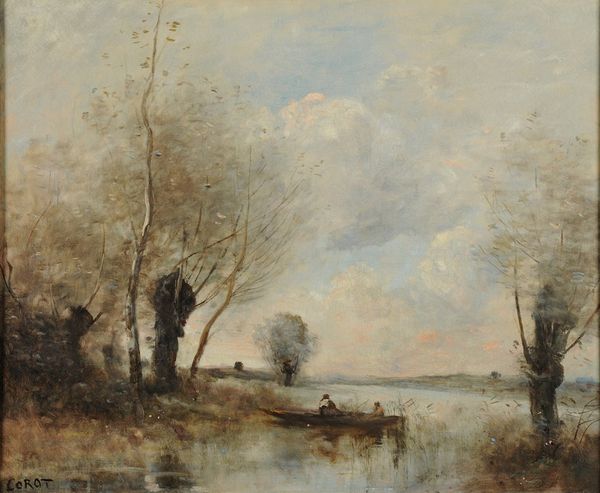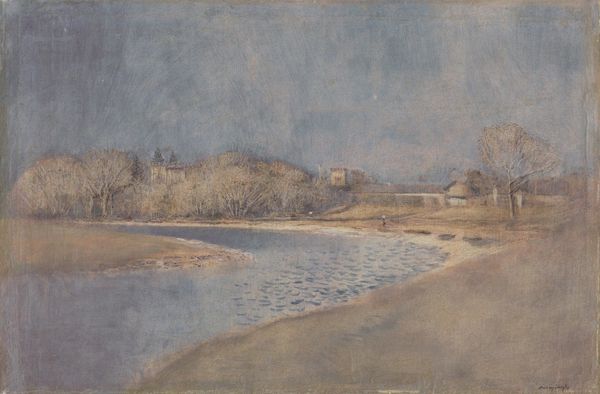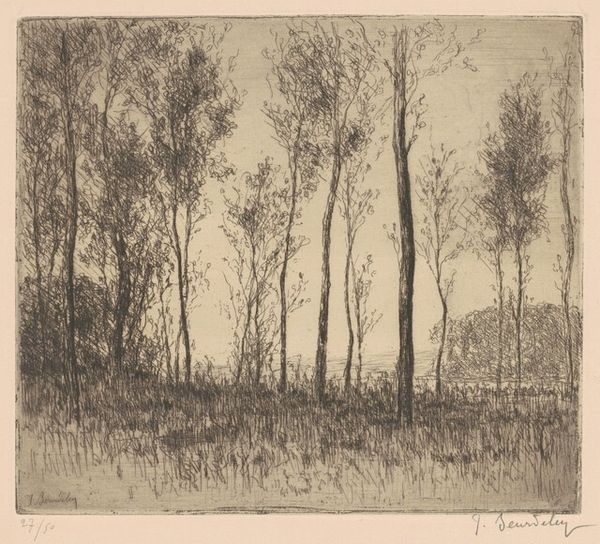
Dimensions: overall: 30.7 × 21.2 cm (12 1/16 × 8 3/8 in.)
Copyright: National Gallery of Art: CC0 1.0
Curator: Looking at this landscape by François-Auguste Ravier from around 1880, rendered delicately in pastel, I am reminded of poetry. It whispers, doesn't it? Editor: Absolutely, I am immediately struck by this pervasive melancholic mood; everything looks to be suspended in a very ephemeral and almost sorrowful light. Curator: I find that quite perceptive! Ravier was deeply inspired by the Barbizon school and their reverence for the ordinary landscapes and the fleeting moments in nature; he often painted en plein-air capturing these raw emotions firsthand. Here he seems to explore the liminality between day and night. Editor: The hazy atmospheric perspective adds depth but also, crucially, conceals as much as it reveals; notice, for example, the attenuated silhouetting of the trees against the diffused twilight, then observe how they become a kind of barrier—or perhaps a frame—drawing us to question the nature of our engagement with the marsh itself. Curator: Precisely! Ravier's loose handling of the pastel captures this moment beautifully, almost like a memory fading, doesn’t it? Those pink and golden hues in the sky melt seamlessly into the muted earth tones, invoking an almost meditative mood. It invites reflection, rather than detailed observation. Editor: Note the use of contrasting tonal values within the work: Ravier plays here by using a muted color palette to amplify a strong distinction between areas of lightness, like in the upper parts of the sky, and dark tones around the base. This helps create a sense of depth that subtly draws the eye of the viewer toward an undefined focal point within the distant skyline. Curator: For Ravier, like the Romantics, art was not about precision, but expressing how nature stirred something deep within the soul. The very medium – pastel – enhances this fragility of feelings. Editor: Ravier manages to masterfully explore the dichotomy of light and shadow using minimalist components and thereby, effectively constructs and engages with our notions and emotional and sensorial recall, too. It's not only a study in composition but also, arguably, of semiotics itself! Curator: Yes, looking closer, one almost feels the dampness in the air, hears the rustling reeds. It’s truly a masterpiece of subtle observation and emotive landscape painting! Editor: Indeed, while compact, it nonetheless makes an impressive contribution to the atmospheric Romantic traditions.
Comments
No comments
Be the first to comment and join the conversation on the ultimate creative platform.
